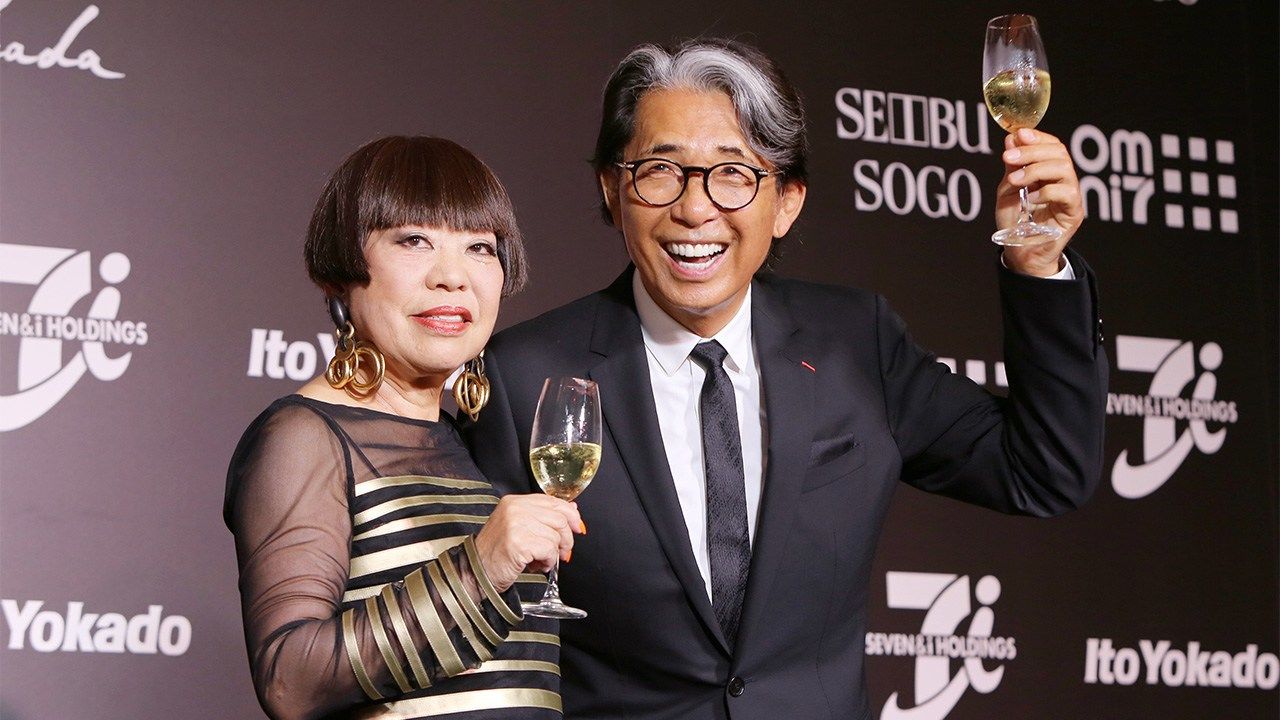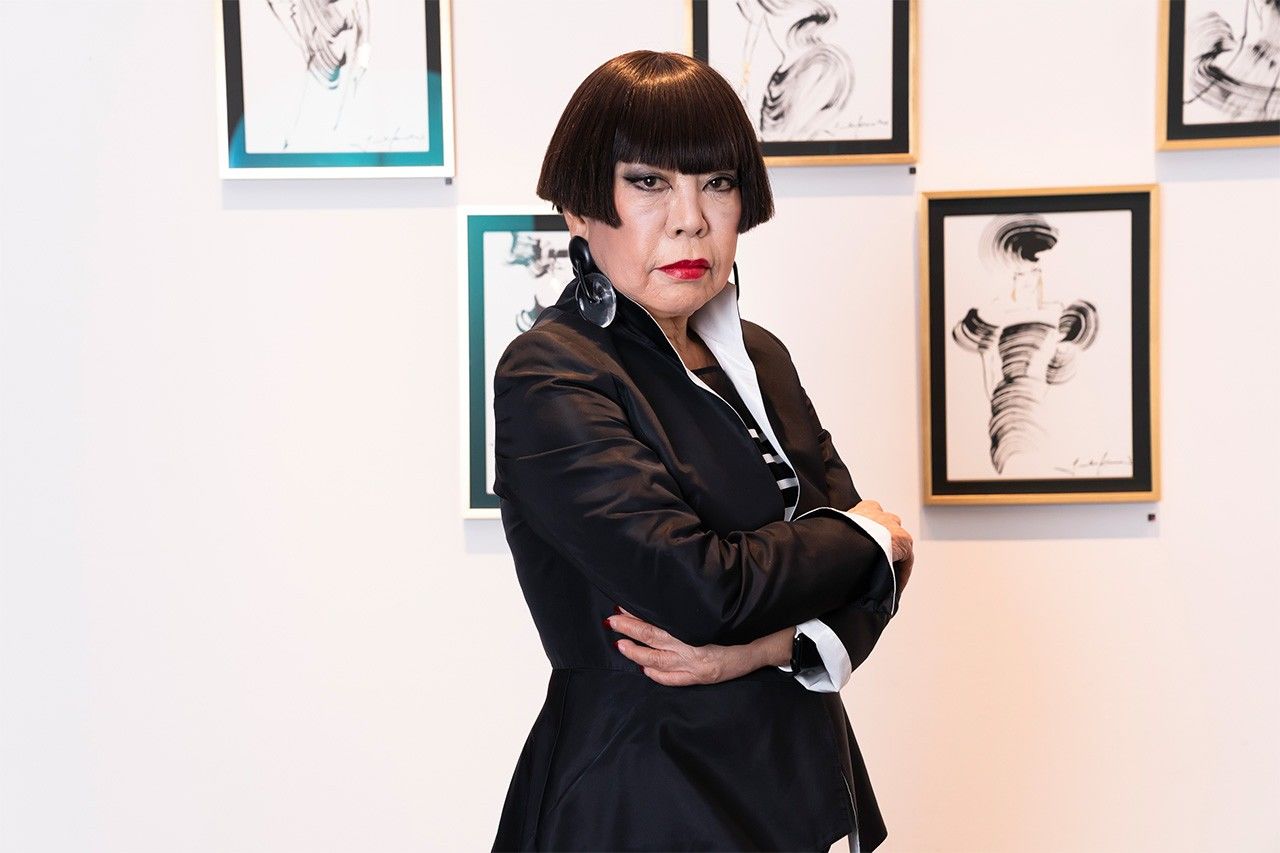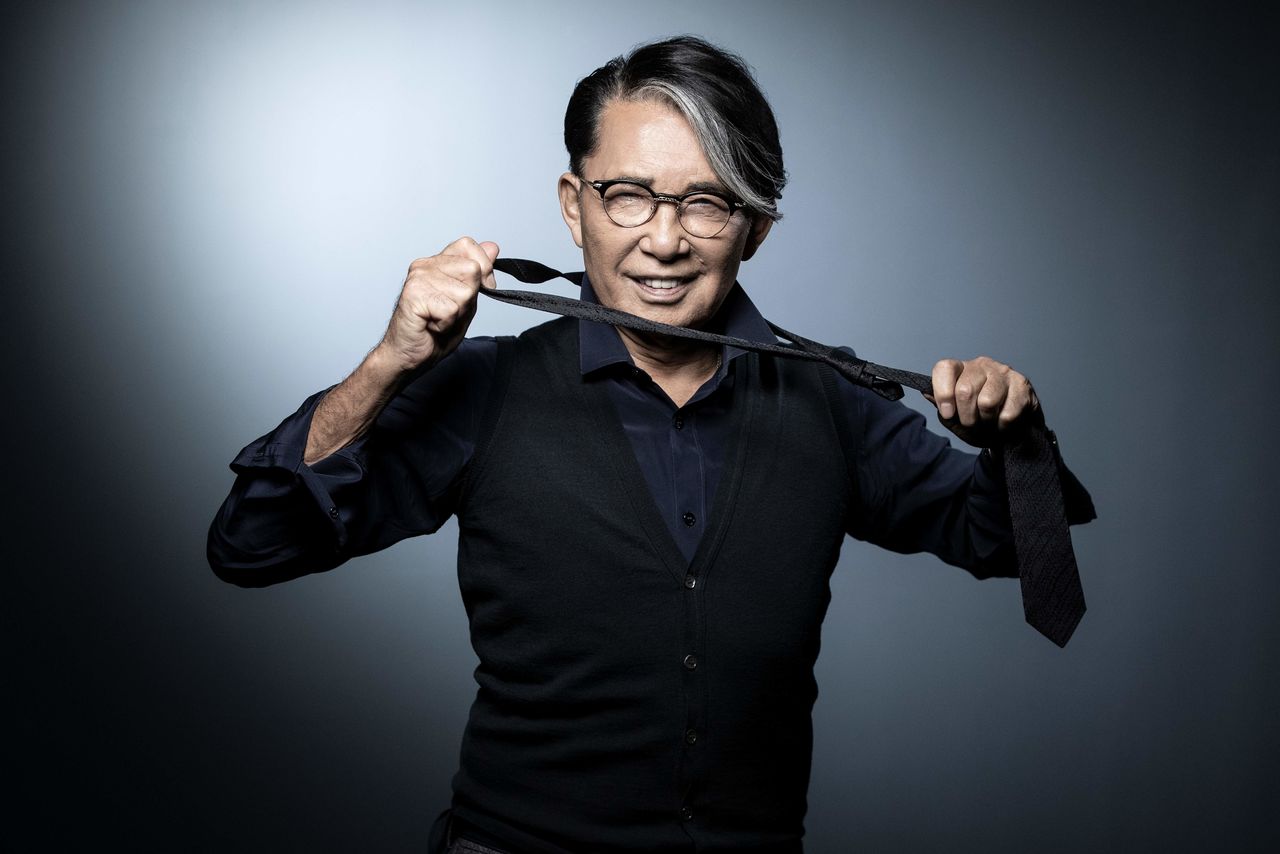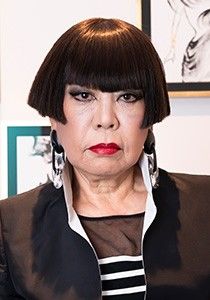
“Closer Than Family”: Fashion Designer Koshino Junko on Her Lifelong Friendship with Takada Kenzō
Culture Fashion Design- English
- 日本語
- 简体字
- 繁體字
- Français
- Español
- العربية
- Русский
A Shocking Late-Night Phone Call
“I used to see Ken-chan, as I called him, twice a year or so,” says Koshino Junko. “The last time we met was at a restaurant in Paris that does excellent Italian food—something of a rarity for Paris. It’s a private place, members only, but Ken-chan introduced me and eventually I became a regular myself. For years, whenever I visited Paris, he would always take me to the latest places that everyone was talking about. He loved entertaining and showing people around. Over dinner, he showed me pictures of some interior design work he had been doing. I was working on a similar project for a hotel in Japan, and we started excitedly making plans to work together the next time he came to Japan . . .”
Eight months later, on the night of October 5, Japan time, the news came that Takada was dead.
“It was around one in the morning. I was getting ready to go to bed when I received a phone call to tell me he had died. We’d spoken in September, and he hadn’t sounded too great then. But I never imagined that would be it . . . I couldn’t believe it. I thought there must have been some mistake. If it hadn’t been for the pandemic, I would have flown to Paris right away, I think.”
A Golden Generation
The relationship between these two Japanese stars of the global fashion scene dates back to 1959, when Koshino (18 at the time) and Takada (one year older) were classmates at the Bunka Fashion College in Tokyo. Koshino recalls:
“He was still wearing his black student uniform from high school then, and glasses with thick black frames. To look at him, you would never have guessed he was studying fashion. Not many of the students at the college in those days were really serious about making a professional career in fashion. In that sense, Ken-chan and I, along with Matsuda Mitsuhiro [later a designer at Nicole] and Kaneko Isao [later a designer at Pink House] formed a little clique, as the ones who were really serious about what we were doing.
“We used to spend all our time together, in and out of class. We spent hours in jazz cafes, went to the movies and the kabuki together, and hung out at each other’s apartments, staying up all night talking about films, music, and books. In those days Ken-chan lived in this crummy apartment next to the railway tracks. The whole place used to rattle and shake every time a train went past. But because of that, the rent was apparently really cheap!”
The four designers would later become known as a “golden” generation of Bunka Fashion College, and came to play a leading role in the Japanese fashion world in the years that followed. The foundations for this glittering success were laid down by Koike Chie, the former director of the college who instilled lessons in her young charges that stayed with them for the rest of their careers.
Koike had formerly worked alongside the likes of Yves Saint Laurent and Karl Lagerfeld in Paris, and she was determined to impart to her students the latest and the most genuine techniques used by leading designers in Paris.
“In those days, a lot of Japanese fashion design was still done using the same plane cutting techniques used in making kimonos and other types of traditional Japanese clothing. But Koike-sensei taught the European draping method, where you drape your fabric over a simple mannequin-like “torso” figure. That you could make these wonderful clothes with just fabric, scissors, and pins—to us, it was an astonishing, revolutionary idea. She used to start the day’s classes with what she called her “morning service,” in which she would read us explanations and commentary on the latest articles from the French fashion magazines. I think those lessons were a large part of the reason why so many of us developed such a fascination with France.”
Japan at the time was at the height of its postwar period of high-speed economic growth. Even so, student life was far from luxurious.
“We all loved music. We used to buy one record between us and sit down listening to it together. I had the same stereo as Ken-chan in those days. I remember it cost 13,000 yen, payable in ten installments. One time I went over to his place and noticed that the speakers were missing. He had run out of money and taken them to the pawn shop! That was the way it was—there were times when we couldn’t even afford to make a 1,300 yen payment.”
“He Was Always Following in My Footsteps!”
Despite the hardships of student life, Koshino and her friends had their eyes fixed firmly on the future. And they were not afraid to work for what they wanted to achieve.
“Once a month, we would gather together the sketches we had done and visit an apparel company or famous designer’s studio and have them evaluate our work. I remember once we went around scraping up funds to put on our own fashion show, the four of us together. In those days, we had no fears. It seemed only natural to look the world in the face and take on whatever challenges life threw at us.”
Koshino was the first of the four to make a splash in 1960 when she became the youngest ever winner of the Sōen Prize, a prestigious award widely regarded as a stepping stone to success for young designers in that era. Takada in particular was inspired by Koshino’s early success. Driven on by the award bestowed on his “ally” and close friend, Takada claimed the prize himself in the following year.
“He was always following in my footsteps! That was the case with the Sōen Prize, and that was the case with Paris too. I went to Paris for the first time in 1964, and for a while after I got back to Japan I would talk about nothing else. So eventually he started to say he wanted to go too. But at the time, a ticket to Paris cost about 300,000 yen.
“I was making fairly decent money by then, but Ken-chan was still working as a salaryman in a regular company and would have been taking home around 20,000 yen a month. Then it turned out that his apartment was going to be knocked down for redevelopment, and they had to pay him compensation money to get him to move out. He used that money on a flight to Paris at the end of the year. I remember he didn’t have the fare to get home. He literally went on a one-way ticket. But it never occurred to us that he would end up spending the rest of his life in France.”

Throughout her long career at the forefront of fashion, Koshino Junko regarded Takada Kenzō as an ally, friend, and inspiration (© Uwadaira Tsunebumi)
First Successes in Paris
The close bond that had grown between the two designers remained unchanged even after Takada moved to Paris.
“In the early days, I think he started out by sketching designs and selling them on spec. Just like in our student days, he took his drawings around the city’s boutiques and magazines with the idea of getting them critiqued, but they were so good that people started buying them from him as they were. He often used to say that those experiences in our student days had served him well.
“His designs proved so popular that before long he was opening a boutique of his own. I did what I could to help. I sent staff over to Paris and helped with the initial funding to get him launched on his own. I was resolved to keep supporting him for a while, whether the boutique was a success or not. But right from his very first collection, the brand was an instant success, and it turned out that he didn’t need any support from me or anyone else. I felt so happy for him—I shared in his success as if it had been my own.”
In 1970, Takada opened his “Jungle Jap” boutique in the Galerie Vivienne in the second arrondissement of Paris. His first collection was a huge success, and made his name widely known in French fashion circles. Koshino has her own theory about the reasons for her friend’s success.
“While he was still in Japan he was obsessed with European fashion, as all of us were. But I think the experience of leaving Japan opened his eyes to some of the positive aspects of Japanese culture and Japanese traditional clothing. He started to design clothes that made bold use of the floral patterns used in Japanese fabrics. He started to move away from the draping approach of European tailoring and employed the plane cutting techniques used in traditional Japanese kimono-making. I think that this was at least part of the reason why the clothes he designed seemed so exotic to Parisians.”
Another of Takada’s advantages as a designer, Koshino says, was that he hadn’t started out as a tailor in a fashion house.
“Until that point, the fashion world had always been dominated by the haute couture model, in which a designer would make original clothes for a customer. People like Yves Saint Laurent and Karl Lagerfeld came up through this system and their whole approach was essentially that of a designer at a traditional maison de couture. Ken-chan stood out from other designers by offering fashion for ordinary people, clothes that people could wear in their daily lives. In that sense, he was a forerunner of the movement toward high-quality prêt-à-porter fashion. His designs appealed to people who had previously had nothing to do with the world of fashion.”
Closer Than Family
The friendship between the two designers continued to the end of Takada’s life. When Koshino visited Paris, she always stayed with Takada in Paris, and he would return the favor when he visited Japan, where he became a close family friend.
“However successful and famous he became, he was always down-to-earth and humble. There was nothing stuck-up about him. Everyone loved him for that, and he valued his friends in return. He had his share of setbacks and disappointments, but it didn’t make any difference to his attitude. He was always smiling, always enjoying life. He reminded me of a hero out of some film.”
Koshino remembers how charming and handsome her friend was, even into his eighties.
“He seemed to become more handsome the older he got. We used to say to each other: since we’re going to grow old together, let’s make sure we don’t let ourselves go, and try to keep our looks for as long as we can. And now he’s gone. He was more than a brother to me, closer than family. I never thought of him as a rival. We studied together, enjoyed the good times together, grew up together. We went traveling and did stupid things together. When he lost someone close, I sat with him in silence through the night, keeping him company.”

Even in his later years, Takada Kenzō oozed style and charm. (© AFP/Jiji)
Now Koshino is left alone to look back over the innumerable memories of a friendship that spanned six decades.
“Because of the pandemic I couldn’t even say goodbye. That’s probably why somewhere inside me I can’t quite accept that he’s gone. It was a consolation to see how widely he was loved and respected. After he passed away, President [Emmanuel] Macron and his wife released a statement saying: ‘Kenzō became synonymous throughout the world with a sense of elegance that was full of joy, flowers, and colors.’ The mayor of Paris, Anne Hidalgo, said, ‘Paris is mourning one of its sons today.’ It brought home to me how remarkable his achievement was. France and Paris had meant so much to us when we were young, and they had taken him to their heart as one of their own.
“You’ve only to look at the flourishing state of prêt-à-porter fashion today to grasp the size of his achievement. It is largely thanks to him that people today are free to enjoy clothes and fashion as we wish. His name will live forever in the history of fashion.”
(Originally published in Japanese. Banner photo: Designers Takada Kenzō, at right, and Koshino Junko drink a toast at a press conference to mark the launch of Sept Premières, a private brand owned by Seven & I Holdings. © Kyōdō.)
